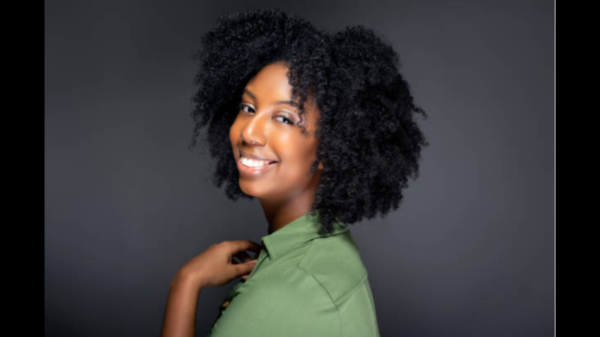By Brent Staples
From – https://www.nytimes.com/
Reprinted – by Texas Metro News
Elizabeth Amelia Gloucester appeared in the census for the final time on June 8, 1880. The census enumerators who crisscrossed Brooklyn Heights were no doubt surprised to find a wealthy Black woman presiding over Remsen House, the grand boarding hotel not far from Brooklyn City Hall that served the white professional classes.
Ms. Gloucester was a pillar of the Black elites who had prospered during the decades before the Civil War, when nine-tenths of African Americans were still enslaved. Remsen House was the jewel of the real estate portfolio she had established when she was a struggling young shopkeeper in bare-knuckled Lower Manhattan. By the spring of 1880, she was an aging Heights eminence, running her empire from the Remsen House residence she shared with her husband and children.

Census workers were accustomed to listing women as the heads of households in which husbands had died. The decision to grant Ms. Gloucester this same designation — even though the Rev. James Gloucester was very much alive and present — reflected a rare recognition that she was the author of the family’s wealth and master of its financial destiny. This represented a victory for a woman who had come of age during a time when husbands subsumed their wives and their assets.
Ms. Gloucester was probably 63 years old on census day — not 60, as the census taker reported — and suffering from the heart disease that would kill her in August 1883. The residence at 144 Remsen Street was brimming with flowers on funeral day. The Brooklyn Daily Eagle described the mourners as a “congregation of people such as has seldom before come together in Brooklyn.” Fashionably dressed white people mingled with a who’s who of the colored world, including several prominent ministers.
Testimonials offered a glimpse of how the “wealthiest colored woman in the United States” had dispensed her largess. She aided the colored poor in both the North and South; conspired with forces that plotted the armed overthrow of slavery; she contributed to the Union effort during the war. The Daily Eagle praised her “marked energy and shrewdness in investing her earnings,” then reverted to the anti-feminist dogma of the day, endorsing the view that women “in the broader sense” were “better fitted” for the emotional rather than the practical side of life.
The coffin with the gleaming silver fittings was conveyed to the family plot at Brooklyn’s Green-Wood Cemetery, bucolic showplace of the affluent dead. The inscription on the monument read: “The undying love of a mother is a thing to cherish and keep. We must guard her memory closer now that she has fallen asleep.” But these pastoral sentiments would soon be eclipsed by a bitter legal fight over the matriarch’s will.
Historians have often cast Ms. Gloucester as a minor player in a story of famous abolitionist men. This essay rescues her from the margins by drawing on hundreds of pages of archival material — including real estate transactions, banking records and genealogical research conducted across three states. The woman who emerges from these long-buried documents hails from a school of feminist heroes who gave no radical speeches, but pioneered women’s rights in their daily lives. Her feminist capitalism is evident in her real estate transactions and in the way she defended her interests from all comers, including her husband.
Nineteenth-century obituary writers can be forgiven for believing that a wealthy Black woman had to have gotten her start as a child of the free Black elite. But a newly uncovered emancipation document makes clear that she came into world as human property around 1817, in the Richmond, Va., household of a general store operator named John Parkhill.
Much of what we know of Parkhill’s temperament comes from a biography of his favorite enslaved person, James Page, who recalls a mainly happy childhood and revels in the fact that the master trusted him to run the general store.
This idyll takes a savage turn when Parkhill sells Page’s mother and younger brother to raise capital for a new venture. He requires the young man to attend the auction — to illustrate the fate that would befall him should he step out of line.
Parkhill acted out of character in the fall of 1823 when he emancipated two of his Negroes: Beckey — a woman of “middle stature” and about 30 years old — and Jane, a child of about seven years old. These were not the actions of a man who had renounced the slave trade. Indeed, the 1830 census would show him enslaving even more souls than he had in 1820.

Elizabeth Gloucester was born a slave around 1817, in the Richmond, Va. household of a general store operator named John Parkhill.Credit…Library of Congress
 Slide 1 of 71/7Elizabeth Gloucester was born a slave around 1817, in the Richmond, Va. household of a general store operator named John Parkhill.Credit…Library of Congress
Slide 1 of 71/7Elizabeth Gloucester was born a slave around 1817, in the Richmond, Va. household of a general store operator named John Parkhill.Credit…Library of Congress Slide 2 of 72/7Elizabeth Gloucester’s name appears in a signature book from the Philadelphia Savings Fund Society.Credit…Historical Society of Philadelphia
Slide 2 of 72/7Elizabeth Gloucester’s name appears in a signature book from the Philadelphia Savings Fund Society.Credit…Historical Society of Philadelphia Slide 3 of 73/7One of Ms. Gloucester’s first purchases was a strategically placed lot in Seneca Village. Her property was located on block 789, lot 20.Credit…New York City Municipal Archives
Slide 3 of 73/7One of Ms. Gloucester’s first purchases was a strategically placed lot in Seneca Village. Her property was located on block 789, lot 20.Credit…New York City Municipal Archives Slide 4 of 74/7Elizabeth Gloucester was offered four-and-a-half times the $100 purchase price of her Seneca Village lot.Credit…New York City Municipal Archives
Slide 4 of 74/7Elizabeth Gloucester was offered four-and-a-half times the $100 purchase price of her Seneca Village lot.Credit…New York City Municipal Archives Slide 5 of 75/7John Brown stayed with the Gloucesters before his raid on Harpers Ferry in October 1849. This is a letter Ms. Gloucester wrote to Mr. Brown earlier that summer.Credit…Historical Society of Pennsylvania
Slide 5 of 75/7John Brown stayed with the Gloucesters before his raid on Harpers Ferry in October 1849. This is a letter Ms. Gloucester wrote to Mr. Brown earlier that summer.Credit…Historical Society of Pennsylvania Slide 6 of 76/7Ms. Gloucester’s will signed in 1861 reveals she concluded long before her death that her family was incapable of managing her holdings. Credit…Amir Hamja/The New York Times
Slide 6 of 76/7Ms. Gloucester’s will signed in 1861 reveals she concluded long before her death that her family was incapable of managing her holdings. Credit…Amir Hamja/The New York Times Slide 7 of 77/7In 1885, Emma Gloucester, who had been disinherited by her mother, died in a fire at a store where she was working, as shown by her death certificate.Credit…New York City Municipal Archives
Slide 7 of 77/7In 1885, Emma Gloucester, who had been disinherited by her mother, died in a fire at a store where she was working, as shown by her death certificate.Credit…New York City Municipal Archives
Virginia planters were notorious for fathering children with women they owned. When these guilt-ridden progenitors got religion or approached the grave, they sometimes freed their colored offspring, providing what the historian Annette Gordon-Reed describes as a “head start on Emancipation.”
The children born to Thomas Jefferson and his enslaved surrogate wife Sally Hemings are the most familiar beneficiaries of this early exit from bondage. Hemings and Jefferson were still in residence at Monticello when Parkhill emancipated Jane — who was almost certainly the person we know today as Elizabeth Gloucester. That she was listed in the census as “mulatto” and chose to keep the Parkhill name up to the time she married James suggests that she may have been the master’s child, as was reported in the press several years after her death.
It is reasonable to conclude that the Beckey listed in the courthouse emancipation was Elizabeth’s mother. It is also significant that the Gloucester burial plot in Brooklyn’s Green-Wood Cemetery includes a young woman named Rebecca — who was almost certainly Elizabeth’s daughter and who could well have been named for Beckey.
The story of how Elizabeth was transplanted from Richmond to Pennsylvania is shrouded in myth. An account in which Parkhill arranges for an African American minister, the Rev. John Gloucester, to raise the child seems out of character for both parties. Aside from that, John died a year before the courthouse emancipation. Nevertheless, Elizabeth was somehow delivered from Virginia, where slavery would persist for decades to come, to Pennsylvania, where a gradual emancipation law had been passed in 1780.
The Gloucester family was now presided over by John’s son Jeremiah and his widow, Rhoda. Growing up in such a household, Elizabeth would have come of age immersed in the gospel of abolitionism. Her connections to an esteemed ministerial family — four Gloucester sons followed their father into the pulpit — would also have given her standing in the community. James, the youngest of the Gloucester sons, would later become her husband.
Elizabeth was a teenager when she entered domestic service in the home of the Quaker gentleman John Cook. The family is said to have paid her 10 shillings a week while teaching her how to handle money. The following version of a conversation between Elizabeth and Ms. Cook appeared in a newspaper story and was probably furnished by the Gloucester family.
“What does thee do with thy money, daughter?” Ms. Cook asked.
“I spend it,” was the reply.
“Well, thee ought to save it,” Ms. Cook is quoted as saying. “I would advise thee to get a bank-book and put thy money in bank.”
The 1832 signature book at the Philadelphia Savings Fund Society shows Elizabeth Parkhill taking Ms. Cook’s advice. It also shows that Elizabeth was illiterate at the time. She made the mark of an “X” under a version of her name written, perhaps, by Ms. Cook, or by a clerk.
The Savings Fund Society record reflects Elizabeth’s progress toward literacy. In 1834, she was no longer signing with an X, but the signature was drawn with great concentration, as though by someone new to writing. By 1835, her penmanship was more natural, though less sophisticated than it would be two decades later in the records of New York City’s Chemical Bank.
The Philadelphia streets through which Elizabeth passed while running errands for her employers placed her on intimate terms with the most important free Black community in the United States. African American women in particular were busily engaged in philanthropic organizations and mutual aid societies that laid the groundwork for political engagement.
The city featured a great deal of Black destitution, but also an emerging working class and a small but highly visible elite that was anchored by the family of the wealthy sailmaker and antislavery activist James Forten, his wife, Charlotte Vandine Forten, and their three daughters.
The Gloucesters were stationed below the Fortens on the social ladder and had reason to hold them in high regard. In 1810, James Forten had helped the Rev. John Gloucester to buy his wife and children out of slavery in Tennessee. This was one of many gestures that reflected the well-documented Forten commitment to strengthening the free Black community.
Elizabeth’s young adulthood coincided with an extraordinary moment in the antislavery movement and the women’s rights movement that was emerging from it. In December of 1833, abolitionists from around the country convened in Philadelphia for the gathering that created the American Antislavery Society. The founders marginalized women by confining them to female auxiliaries.
The Forten daughters joined with white women in the Philadelphia Female Antislavery Society, an organization that would move women closer to formal politics. This was hazardous duty at a time when white mobs responded with murderous violence — and hysterical charges of racial “amalgamation” — when Black and white men and women addressed large crowds about the immorality of slavery.
The Gloucesters and others who had come to know Elizabeth would have warned her of how easily the city’s anti-Blackness could escalate from insults to rock throwing to murderous pogroms like the one that erupted on a balmy August evening in 1834.
It all began with white men who congregated on Seventh Street, between Shippen and Fitzwater, murmuring among themselves about “hunting the nigs.” As the historian Kerri K. Greenidge explains in her recent book “The Grimkes,” the horde targeted a popular carousel ride known as the Flying Horses.
As the mob grew “with brickbats, broom handles and wooden planks at the ready, it began to spill in ‘one inhuman mass’ down the street, its members screaming as they unleashed violent rage onto the Black people and institutions in their path.”
The Fortens watched from their Lombard Street home as the rioters ravaged institutions they had devoted their lives to building, including St. Thomas Church, where their children had attended Sunday school. Elizabeth lived outside the riot area but understood that the life she was working hard to build could be obliterated without warning.
Black Gotham
Elizabeth Amelia Parkhill and James Gloucester married in Philadelphia, probably about 1836, and moved to New York not long afterward. The couple’s entry into Manhattan colored society would have been eased by their membership in an esteemed family of churchmen.
James’s father, the Rev. John Gloucester, had emerged from slavery to establish the First African Presbyterian Church. James’s brother Jeremiah — a celebrity preacher in his own right — had already made a favorable impression on New York’s colored upper classes during a visit to the city in 1837.
The couple landed at the most auspicious address in Black Gotham. An 1841 city directory lists them at 93 West Broadway, which housed the pharmacy and medical offices of Dr. James McCune Smith, the first Black American to earn a medical degree and a leading intellectual of the antislavery movement.
Dr. Smith received his early education at New York City’s vaunted African Free School, whose graduates included some the best-educated Black men and women in the United States. Rejected by American medical schools for reasons of race, he excelled at the University of Glasgow in Scotland. He returned to a hero’s welcome in Black New York and established an unusual practice that included white patients. He devoted his literary gifts to debunking “scientific” theories of racial inferiority.
Dr. Smith’s backroom library served as an epicenter of activism, where Black Gothamites gathered to strategize about how to defeat slavery in the South and advance the cause of racial justice in the North. At the turn of the 1840s, the group would have been intently focused on the predations of a kidnapping club that was abducting and trafficking African Americans into slave states. This danger reinforced the sense that African Americans would remain at risk as long as slavery existed anywhere in the country.
The Gloucesters established themselves in Manhattan as the library conclave was parting company with the belief that moral argument would persuade white Americans to dismantle slavery. Dr. Smith’s friend Henry Highland Garnet broke dramatically with pacifism in his 1843 “call to rebellion” speech, delivered at the Colored Convention in Buffalo, where he urged four million enslaved people to revolt, even if it meant certain death and rivers of blood.
Ms. Gloucester plunged into Manhattan’s merchant class. The city clerk granted her a license to sell used goods on in October 1845. She was soon running a furniture business at 76 West Broadway, in rough-and-tumble Lower Manhattan.
Within a few years, she was pursuing deals with Black landholders who were eager to turn a profit while also keeping as much wealth as possible in colored hands. One of her first purchases brought her a modest but strategically placed lot in Seneca Village, the uptown settlement established in 1825 by African Americans who were fleeing racial terrorism in Lower Manhattan.

She was unable to buy the West 88th Street property directly and instead acquired it through James. The transfer from him to her reflected her resistance to remnants of a legal tradition that regarded husband and wife as the same person. The couple got around this obstacle by selling the lot to their attorney for the nominal sum of $10. The attorney then transferred the land to Ms. Gloucester alone for the same sum.
As the historian Sara Cedar Miller has pointed out, the deed that cemented Ms. Gloucester’s control over the West 88th Street lot reflected a wariness of property laws that favored husbands. The deed specifically precluded the possibility of a claim by her husband — declaring that she held title “forever and free clear and discharged of and from the debts obligation and control of her said husband, the said James N. Gloucester, and in like manner and to all intents and purposes as if she were a feme sole.”
In Anglo-American law, the term “feme sole” refers to a woman who is widowed, divorced, never married, or no longer legally subordinate to a husband. Ms. Gloucester’s lawyer may have used the phrase as a reference to New York’s recently passed married women’s property act. But this assertion of independence would have had a personal meaning for his client.
Ms. Gloucester was a novice investor when she took possession of the Seneca Village lot in the summer of 1848. Several years later, the city notified hundreds of people that their land would be seized to make way for Central Park. By this time, she held properties that were spread among Manhattan, Brooklyn and Suffolk County, Long Island.
The Seneca Village lot came to her from William A. Smith and his wife, Sarah, an African American farming couple from Franklin County, N.Y., near the Canadian border. She purchased yet another valuable property, on Sixth Avenue in the 50s, from her friend and mentor Dr. McCune Smith. The transaction that gave birth to Siloam Presbyterian Church in Brooklyn, where her husband served as the founding minister, shows how she combined philanthropy and money making: She rented land to the congregation — with an option to buy if the church was still extant five years later.
The stewards of eminent domain were singing her song when they offered four-and-a-half times the purchase price of the Seneca Village lot. Our real estate baroness-to-be was ready to close out that investment and move on to the next deal. But imagine her vexation when city records mistakenly attributed ownership of the lot to the Rev. Gloucester.
Some wives would have let the matter ride and worked out a handshake deal with their spouses. But Ms. Gloucester was not inclined to settle the matter privately. Her attorney filed a petition of clarification that stands out in the municipal record to this day. The document made clear to all concerned that Ms. Gloucester, not James, owned the property.
A Voice for Radical Abolitionism
Records show that Ms. Gloucester gave birth to 10 children — not eight or nine, as has been reported. Two died quite young, and three others, including Rebecca, expired in their teens. Of the offspring who lived to the age of majority, five attended college and three — Emma, Eloise, and Adelaide — graduated from Oberlin, in Ohio. The school’s antislavery and gender fairness policies made it a preferred destination of the leadership class that W.E.B. Du Bois would later describe as “the Talented Tenth.”
New York was a fiercely proslavery city, where abolitionists were always one riot away from being driven from their homes. Children of prominent antislavery households grew up with a keen sense of danger — but they also understood that families of means had an obligation to place themselves at the forefront of the fight. Abolitionism was the civic religion of the class.
The Gloucester brood learned this lesson more directly than most. Their mother frequented Plymouth Church in Brooklyn Heights and would surely have taken the older children to hear its pastor, Henry Ward Beecher, the pre-eminent antislavery preacher of his day. A charismatic performer, Beecher dramatized the evils of slavery with mock auctions through which the congregation purchased the freedom of enslaved persons. The church is known today as “the Grand Central Depot” of the Underground Railroad.

The great voices of radical abolitionism convened in the Gloucester living room. The Gloucester children knew Frederick Douglass. They were fond of his fiery friend John Brown, who stayed with their home family while preparing his assault on the federal armory at Harpers Ferry, which he hoped would spark a sweeping slave rebellion.
The Gloucesters gave Brown access to a network of African Americans who might be induced to support his cause. But for Brown, passing time with Black people was emotionally fortifying. African Americans who embraced his invasion plan reinforced his sense of himself as the avenging hand of God on earth.
Brown was a keen judge of human nature and could see that Elizabeth exercised authority both in her domestic life and in the public sphere. He referred to her as “sister” and is often quoted as saying that he wished she were a man — so that she could ride along with his invasion band.
The quote as James recalled it conveyed a more nuanced meaning. When Brown told him: “I wish your wife were the man of you two” he was expressing a belief that Elizabeth would have joined the invasion in a heartbeat had gender not been an obstacle. He was also revealing his disappointment that James would not take up arms, even though he was free to do so.
Elizabeth’s interests included charity. In 1860, she served as “first directress” of a fund-raising project for the Colored Orphan Asylum, a refuge to parentless Negro children throughout the Northeast. That she led the effort suggests that she was the wealthiest, best connected member of a group that included widely known members of the Northeastern colored elite.

The Weekly Anglo-African reported that Beecher had “generously given up his church on his regular lecture night” to make way for a fund-raiser; the church trustees granted free use of the building instead of charging rent. Beecher’s celebrity ensured an interracial crowd so large that people were turned away at the door.
Elizabeth and her fellow directresses stood out in their striped calico gowns and were “as busy as the most industrious of bees” as they circulated through the crowd at the benefit. Among the Black business owners who contributed food to the event was the Oyster King Thomas Downing, whose popular Manhattan restaurant catered to wealthy white patrons while concealing fugitives from slavery in the basement.
The colored elites viewed the evening as more than a charitable endeavor. A celebrant interviewed by the Weekly Anglo-African newspaper wished for a magical means through which “the entire white population” could see the gathering. His hope was that white people who experienced splendid Negro company would be divested of the racial hostility that hemmed in African Americans at every turn.
The colored orphanage to which Ms. Gloucester devoted her attention was housed in a handsome Greek Revival building perched atop a small hill set between West 43rd and 44th Streets on Fifth Avenue in Manhattan. The white men who looted and torched the edifice in the summer of 1863 announced themselves with cries of “Burn the niggers’ nest!” The mob carried away rugs, food, furniture and clothing in a prelude to a campaign of terror that targeted African Americans.
A number of people were lynched during the carnage. Mary and Albro Lyons tried to defend their home, but were driven away. When it was over, they returned to find the house in ruins and the furniture broken or stolen. As the couple’s daughter Maritcha Lyons later wrote: “From basement to attic evidences of the worst vandalism prevailed. A fire, kindled in one of the upper rooms, was discovered in time to prevent a conflagration.”
This act of racial terrorism, known as the Draft Riots, reminded Negro aristocrats that they were no more secure in their homes than the poorest street vendor. By this time, the Gloucesters had moved to Brooklyn, outside the radius of destruction. The matriarch’s thoughts on the orgy of violence went unrecorded, but she could not have been surprised. After all, she had experienced similar horrors during her formative years in Philadelphia.
Ms. Gloucester concluded long before her death that her family was incapable of managing her holdings as she had so ably done. Moreover, she did not trust James to administer the estate fairly and in accordance with her wishes. These views were reflected in the will she signed on June 19, 1861. The document placed the estate in the hands of outside trustees — a move that would have angered James no end — and ordered them to to liquidate her assets and divide the proceeds in seven parts, to be equally divided among James and the couple’s six children.
This version of the will stood until 1866, when she filed a brutally worded codicil disinheriting Emma “in consequence of undutiful conduct.” Elizabeth could have left it at that — but clearly intended to wound Emma and cast her out of the family. To that end, she instructed the executors to pay her wayward daughter the witheringly paltry “sum of ten dollars” and barred siblings who might precede her to the grave from leaving her any portion of the estate.
The will reflected a dramatic fall from grace for the family’s golden daughter. Emma had graduated from Oberlin with a specialty in literature in 1856, when there were probably no more than a few dozen Black college graduates in all of the United States. Her betrothal to another luminary, Dr. Thomas Joiner White — one of the first African Americans to receive an M.D. from an American university — was the best conceivable match for a daughter of the colored upper classes. This union was meant to solidify the class gains that Elizabeth and James hoped to pass on to their descendants.
But Thomas died of cholera not long after the couple settled in Chatham, Ontario, a community at the terminus of the Underground Railroad known as the “Black Mecca.” Once back in Brooklyn, Emma appears to have either cohabited with or married a man of lower station. This choice touched on a primal fear of the colored elites — that their daughters would squander hard-won social capital and succumb to downward mobility.
Golden Emma’s misfortunes persisted after her mother’s death. In 1885, she was working as a storekeeper in Manhattan when her clothing went up in flames. When she died, James laid her to rest in Green-Wood, which might not have been possible had her mother still been alive. Five years later, James took his own place in the shadow of Elizabeth’s burial monument.

The prosperity that Ms. Gloucester wanted for her descendants failed to materialize. The wealth she bequeathed to her children seems to have dissipated fairly quickly. Genealogical records strongly suggest that the family line died out in 1981, when the last surviving heir came to rest in the family plot at Green-Wood.
The Lady of Remsen House seems not to have confided her thoughts to diaries or letters. Her remarkable life expresses itself through the business transactions that made her wealthy and influential, allowing her to champion the abolitionist movement and charities that cared for indigent children. Her story serves as a reminder that many wives and mothers who deserve to be seen as women’s rights pioneers never climbed the steps of a speaker’s platform, but succeeded in making the rights of women real in their daily lives.









You must be logged in to post a comment Login